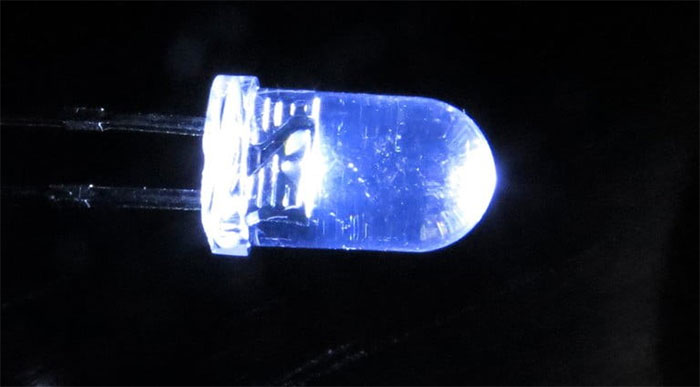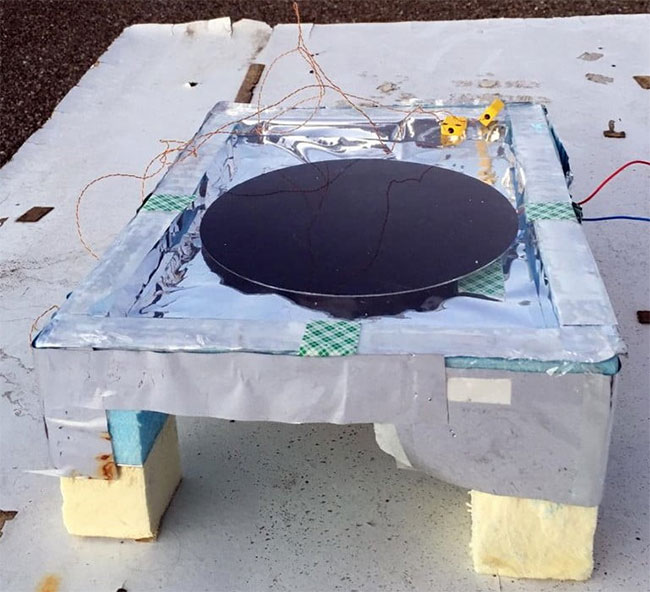Generating electricity from the night, scientists have made the darkness no longer scary
By using an inexpensive thermoelectric device, scientists can take advantage of the endless and readily available things around us to create electricity: cold darkness. This process is known as the radiant cooling reaction, resulting in a current large enough to light the LED bulb.
The device is similar to solar panels, the difference is that it does not draw energy directly from the sun but from the temperature change between day and night . Because of this, the device can generate electricity at night when solar panels do not gain energy.

Lighting without a grid at night is no longer an unbelievably difficult task.
'Why wait until day to get the power to generate electricity, when we can do it at night? Not only lighting, we believe this technology can bring electricity to remote areas that are difficult to access to the national grid and need electric power at night, ' said Aaswath Raman, assistant professor at Dai. Study California, Los Angeles, as the author of the study, said.
Solar batteries receive light and heat from the sun during the day and begin to convert into electricity. But at night, storing and using that energy becomes a difficult problem and often causes the technology to cost more than once.
Raman and two other scientists from Stanford University, including Wei Li and Shanhui Fan, have developed a device that uses radiation cooling technology to generate electricity in the middle of the night . A simple expression is that the heat of the ground travels into the atmosphere in the form of heat radiation, a part of which is lost into the air, merging into the cold air in the upper atmosphere.

A thermoelectric device that receives energy from radiant cooling, is gathering energy from nature.(Photo: Aaswath Raman / UCLA).
This technology captures the amount of heat lost in the middle of the road. In the afternoon when the sun goes down, the ground will gradually turn cold, and the difference in temperature between day and night appears when radiation cooling takes place. The team of researchers tested the technology on Stanford University campus and achieved some success.
'Our research provides an opportunity for cold regions of the world to generate heat and electricity, they are a renewable and completely green energy source. Although the power output is significantly low, it will be a great help for solar power on sunny days or cold nights, '' Raman added.
Solar energy has gradually become a popular source of energy in the last few years as more and more families and businesses have invested themselves in a solar photovoltaic system. The desert regions of Asia and the Middle East are the fastest growing places for this technology because of the unique weather conditions there.
- The team of scientists who make 'reverse solar cells', in the dark, also generates electricity
- Why does darkness make people afraid?
- Scientists create electricity from the coldest space in the universe
- Bacteria are capable of generating electricity
- Night: Solar power plant generates electricity!
- Why are people afraid of the dark?
- Fabrication of paint capable of generating electricity from solar energy
- Generate electricity: Just walk
- The battery generates electricity through the air
- Smart shoes create electricity
- Create new electricity from the leaves
- New system generating electricity from tides
 The US company is about to build a supersonic passenger plane of 6,000km / h
The US company is about to build a supersonic passenger plane of 6,000km / h Japan develops avatar robot as in fiction film
Japan develops avatar robot as in fiction film Australia tested the world's first mango picking robot
Australia tested the world's first mango picking robot Finland installs the world's first sand cell system
Finland installs the world's first sand cell system